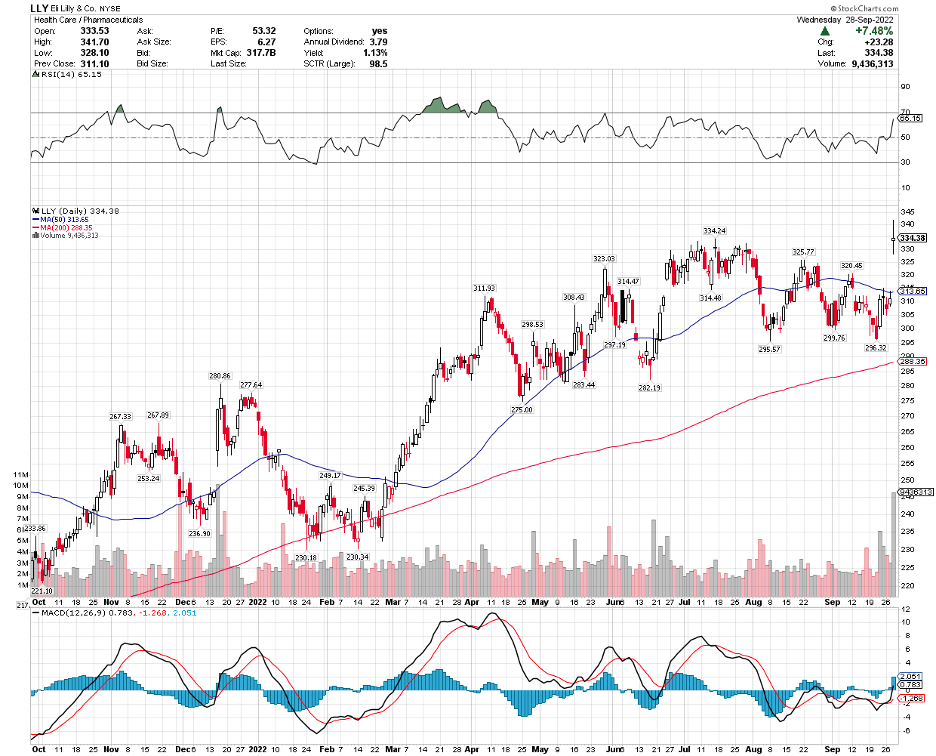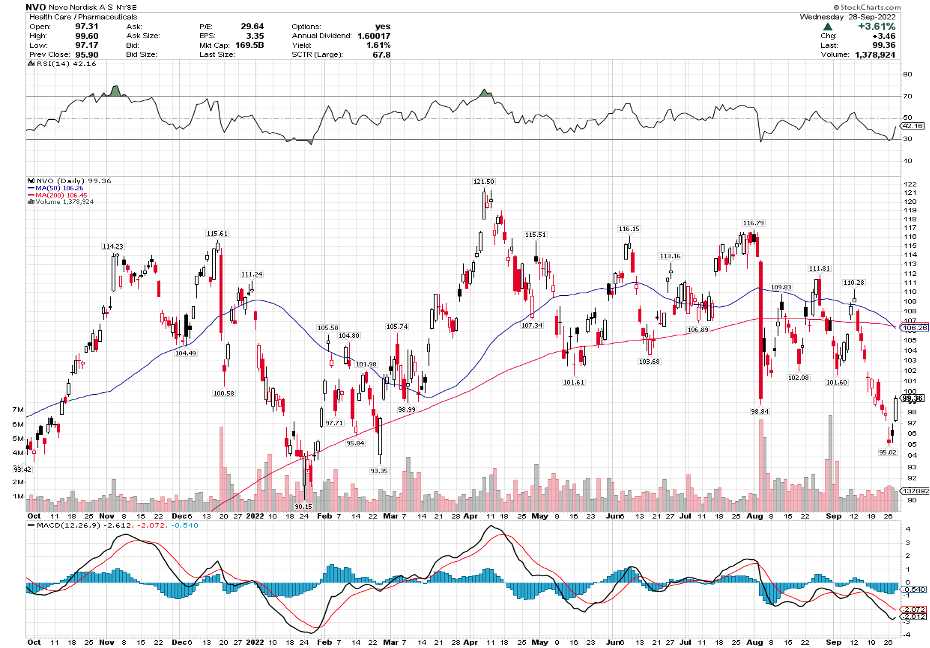This is not your run-of-the-mill weight-loss story.
The number of obese American adults has climbed from 13% to 43% in the last 60 years. That’s approximately 100 million individuals in the United States alone.
The average American male currently weighs about 200 pounds, up from 166 back in 1960, while the average female is at 171 pounds, up from 140.
Obesity, or just being overweight, has several ripple effects. This carries the risk of diabetes, cardiovascular issues, and even cancer. It can also interfere with a person’s work, sleep, and other day-to-day activities.
Many factors have been studied as potential reasons behind obesity, but it has become very clear that solving the epidemic would need more than simply diet and exercise.
Taking on this challenge are Eli Lilly (LLY) and Novo Nordisk (NVO), competitors that came up with a promising drug, known as incretins, to hopefully solve the issue.
Amid all the dietary fads, supplements, and exercise trends we’ve seen, we are on the cusp of finally getting safe and effective drugs for this condition.
We can go as far as claiming that these could very well be our best hope in the fight against obesity. This epidemic has been threatening the way of life of over 100 million Americans and roughly half a billion people globally.
Nobody has ever witnessed the weight loss offered by this new category of drugs, called incretins.
Scientific research has enabled people to shed over 20% of their weight. Needless to say, incretins could become the top-selling drugs in the history of the pharmaceutical industry.
For context, a drug is tagged as a “blockbuster” when it manages to record $1 billion in sales annually. To date, the top-selling drug worldwide is Humira from AbbVie (ABBV), with roughly $20 billion in yearly sales.
If each obese American sought treatment (and given the projected prices of these drugs) the yearly sales for incretins would hit at least a trillion dollars.
Obviously, insurers would refuse to pay these sums, which is why studies have been conducted to show how these drugs could effectively prevent critical conditions like diabetes and heart disease. That is, it will be considered a maintenance drug.
Marketing incretins as treatments for diabetes and obesity could rake in $50 billion to $60 billion in sales over the next decade. As of the moment, the market is dominated by a duopoly of Eli Lilly and Novo Nordisk.
Recently, Eli Lilly gained much attention after its diabetes drug Mounjaro received FDA approval. While the product was given the green light earlier in 2022, the company has also become more aggressive in marketing it as an anti-obesity treatment.
When it goes to market, Mounjaro is expected to go head-to-head against Novo Nordic’s Wegovy. Both target basically the same market, but Eli Lilly’s candidate showed better results.
According to Eli Lilly, patients given the highest dosage of Mounjaro recorded an average weight loss of 22.5% over roughly 18 months.
In terms of sales potential, Wegovy reached $183 million in the first quarter of 2022. With Eli Lilly hot on its heels, investors should expect a slide in Novo Nordisk’s sales for this product.
When Mounjaro was initially released, it was expected to reach peak sales of $15.4 billion. However, the drug’s effectivity and potential to address weight loss boosted predictions to $25 billion.
The reason for the increase in confidence in Eli Lilly’s drug is pretty simple. Offering treatment to 1.6 million Americans yearly would generate $20 billion in sales in the US alone—which only comprises 2% of the estimated population of obese individuals in the country.
Either way, it’s a massive market. Dominating a small portion would already move the needle for any biopharmaceutical company. Hence, I recommend you buy the dip for these companies aiming to solve the obesity epidemic.


